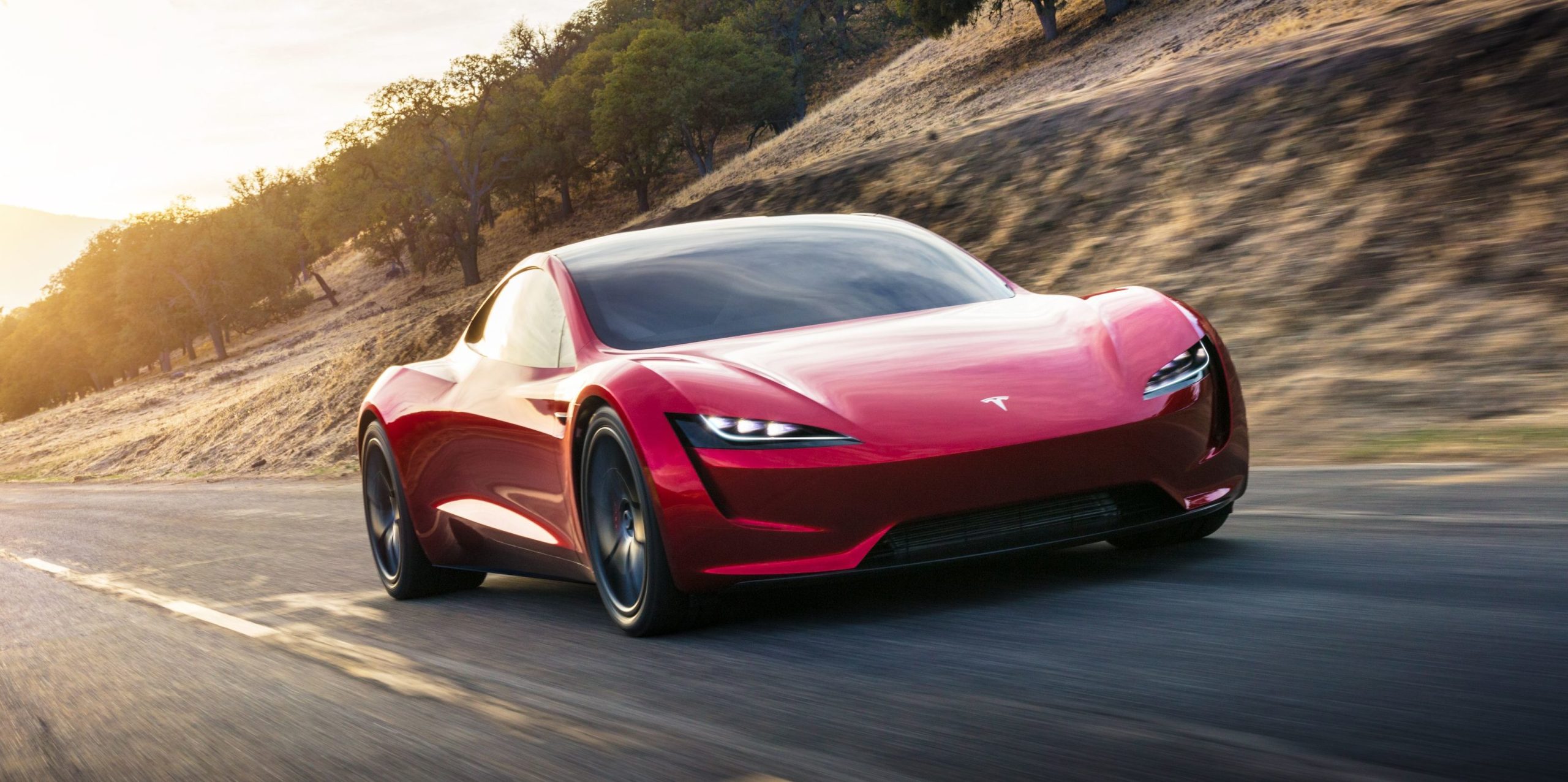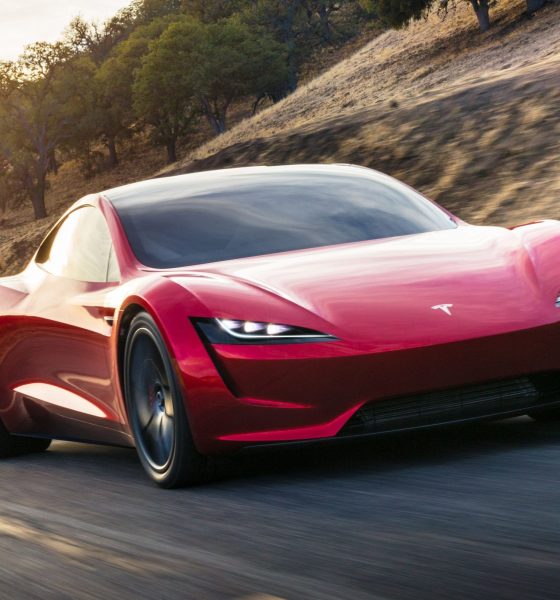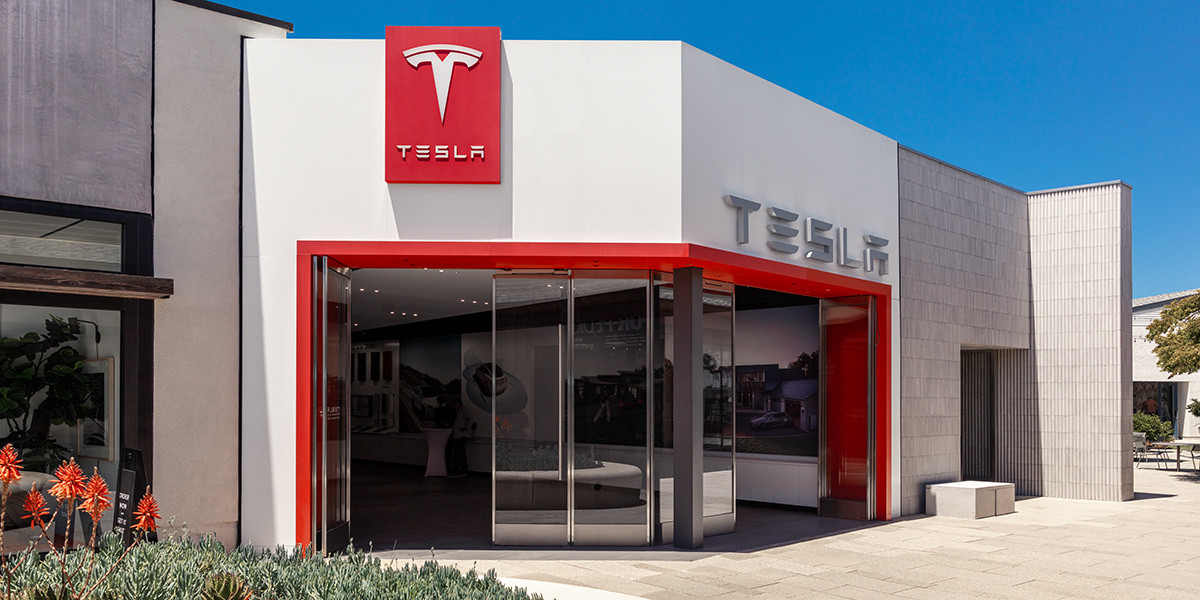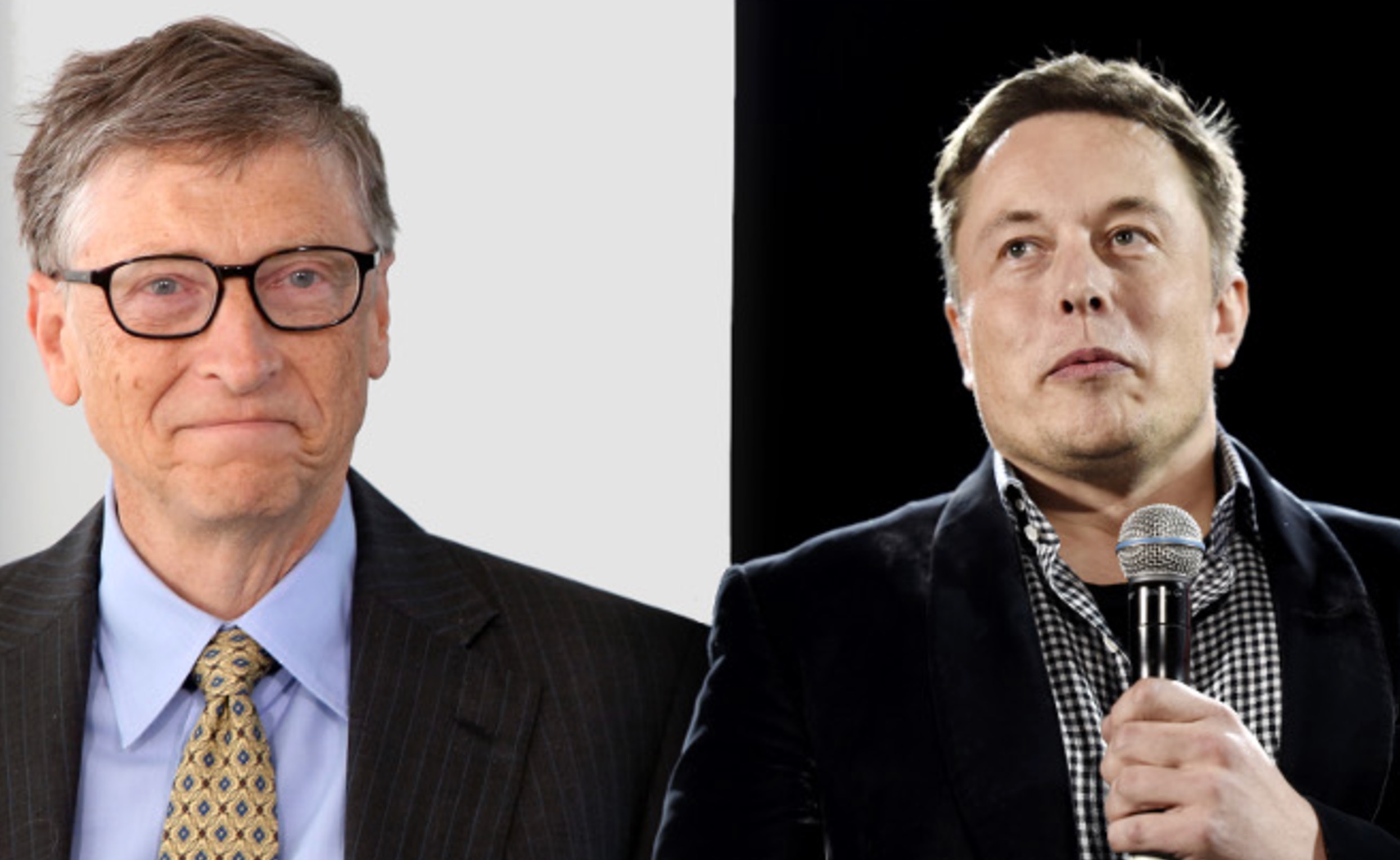

News
Tesla Roadster performance specs are actual and not theoretical, says test driver
Emile Bouret, the man behind the wheel of the next-gen Roadster during the vehicle’s test drives last November, recently called on all car enthusiasts to support the upcoming all-electric supercar. According to the veteran test driver, vehicles like the next-generation Roadster have the potential to make the automotive world a “better place,” considering that it would likely trigger a race to make cars that are even more impressive.
Bouret has worked with Tesla since the company’s early days. A close friend of Tesla chief designer Franz von Holzhausen and a 28-year veteran of the auto industry, Bouret has been asked to test drive the electric car makers’ vehicles from the original Tesla Roadster and the Model S. During his interview with YouTube’s VINwiki channel, Bouret admitted that he does not really understand the hate being directed towards the next-gen Tesla Roadster.
“I love that I live in a world where all these cars exist. You have Koenigseggs and Paganis and Ferraris and Lamborghinis and McLarens and Porsches and Rimacs and Teslas. So, I know there’s a lot of hate out there, but I just don’t understand it. If you’re a car person, wouldn’t you root for everybody? I’m definitely rooting for them because the world will be a better place if that car does get built and it gets on the road, because other people are gonna build cars to beat it — and we’re gonna win.”
The next-generation Tesla Roadster gave the auto industry a massive surprise when Elon Musk unveiled the vehicle last November. The all-electric supercar’s claimed specs, after all, including its 0-60 mph time of 1.9 seconds, it’s quarter-mile time of 8.8 seconds, and its range of 620 miles per charge, have caused some controversy among conventional car enthusiasts. Among the most prominent points of skepticism include speed limitations because of the vehicle’s tires, as well as battery technology that is yet to be attained.
Tesla, however, has assured that the specs announced for the next-gen Roadster are actually conservative. According to Bouret, the upcoming all-electric supercar’s figures related by Elon Musk were not theoretical. They were the actual numbers that their tests have shown.
“Those aren’t theoretical. Those aren’t calculations. We’ve done those numbers. And I probably shouldn’t say that those numbers are even conservative, but they are. That thing is going to be a proper weapon,” he said.
The pervading doubts cast on the next-generation Tesla Roadster’s speed and range are understandable, considering that no other vehicle on the road today boasts comparable specs and performance. Over the past few months, however, Tesla has been dropping hints that the company does have all the necessary resources it needs to attain, or even surpass, the vehicle’s specs that were announced last November.

A white next-gen Tesla Roadster makes an appearance during the 2018 annual shareholders meeting. [Credit: Dennis Pascual/Twitter]
Just last month, for example, Elon Musk openly discussed the idea of using some of SpaceX’s technology to augment the performance capabilities of the next-generation Tesla Roadster. According to Musk, the upcoming supercar would use Composite Overwrapped Pressure Vessels (COPV), which are used by SpaceX’s Falcon rockets during re-entry and landing, to help the car’s acceleration and maneuverability. As we noted in a previous report, the seemingly outlandish idea is actually feasible.
As for the next-gen Roadster’s battery technology, Tesla CTO JB Straubel discussed it best during the company’s Q1 2018 earnings call. While addressing a question about the Tesla Semi’s range, Straubel noted that much of the doubts behind the company’s estimated range for its vehicles comes from a misunderstanding of the company’s battery tech.
“I think the key point is that it doesn’t require a dramatic breakthrough. So there’s a fundamental misunderstanding, I think, of what the current technology in our existing products can actually do. If they’re benchmarking sort of the best battery pack they can buy from a supplier, and then mapping that with what the Semi could do, it doesn’t solve. I think that’s maybe where most of it is coming from, but we basically have what we need in-house, and understand how to do those specs today,” Straubel said.
The next-generation Tesla Roadster is expected to enter production sometime in 2020. Test drives for the vehicle are expected to begin late next year.
Watch Emile Bouret’s discussion of the next-generation Tesla Roadster in the video below.

News
Tesla dispels reports of ‘sales suspension’ in California
“This was a “consumer protection” order about the use of the term “Autopilot” in a case where not one single customer came forward to say there’s a problem.
Sales in California will continue uninterrupted.”

Tesla has dispelled reports that it is facing a thirty-day sales suspension in California after the state’s Department of Motor Vehicles (DMV) issued a penalty to the company after a judge ruled it “misled consumers about its driver-assistance technology.”
On Tuesday, Bloomberg reported that the California DMV was planning to adopt the penalty but decided to put it on ice for ninety days, giving Tesla an opportunity to “come into compliance.”
Tesla enters interesting situation with Full Self-Driving in California
Tesla responded to the report on Tuesday evening, after it came out, stating that this was a “consumer protection” order that was brought up over its use of the term “Autopilot.”
The company said “not one single customer came forward to say there’s a problem,” yet a judge and the DMV determined it was, so they want to apply the penalty if Tesla doesn’t oblige.
However, Tesla said that its sales operations in California “will continue uninterrupted.”
It confirmed this in an X post on Tuesday night:
This was a “consumer protection” order about the use of the term “Autopilot” in a case where not one single customer came forward to say there’s a problem.
Sales in California will continue uninterrupted.
— Tesla North America (@tesla_na) December 17, 2025
The report and the decision by the DMV and Judge involved sparked outrage from the Tesla community, who stated that it should do its best to get out of California.
One X post said California “didn’t deserve” what Tesla had done for it in terms of employment, engineering, and innovation.
Tesla has used Autopilot and Full Self-Driving for years, but it did add the term “(Supervised)” to the end of the FSD suite earlier this year, potentially aiming to protect itself from instances like this one.
This is the first primary dispute over the terminology of Full Self-Driving, but it has undergone some scrutiny at the federal level, as some government officials have claimed the suite has “deceptive” naming. Previous Transportation Secretary Pete Buttigieg was vocally critical of the use of the name “Full Self-Driving,” as well as “Autopilot.”
News
New EV tax credit rule could impact many EV buyers
We confirmed with a Tesla Sales Advisor that any current orders that have the $7,500 tax credit applied to them must be completed by December 31, meaning delivery must take place by that date. However, it is unclear at this point whether someone could still claim the credit when filing their tax returns for 2025 as long as the order reflects an order date before September 30.

Tesla owners could be impacted by a new EV tax credit rule, which seems to be a new hoop to jump through for those who benefited from the “extension,” which allowed orderers to take delivery after the loss of the $7,500 discount.
After the Trump Administration initiated the phase-out of the $7,500 EV tax credit, many were happy to see the rules had been changed slightly, as deliveries could occur after the September 30 cutoff as long as orders were placed before the end of that month.
However, there appears to be a new threshold that EV buyers will have to go through, and it will impact their ability to get the credit, at least at the Point of Sale, for now.
Delivery must be completed by the end of the year, and buyers must take possession of the car by December 31, 2025, or they will lose the tax credit. The U.S. government will be closing the tax credit portal, which allows people to claim the credit at the Point of Sale.
🚨UPDATE: $7,500 Tax Credit Portal “Closes By End of Year”.
This is bad news for pending Tesla buyers (MYP) looking to lock in the $7,500 Tax Credit.
“it looks like the portal closes by end of the year so there be no way for us to guarantee the funds however, we will try our… pic.twitter.com/LnWiaXL30k
— DennisCW | wen my L (@DennisCW_) December 15, 2025
We confirmed with a Tesla Sales Advisor that any current orders that have the $7,500 tax credit applied to them must be completed by December 31, meaning delivery must take place by that date.
However, it is unclear at this point whether someone could still claim the credit when filing their tax returns for 2025 as long as the order reflects an order date before September 30.
If not, the order can still go through, but the buyer will not be able to claim the tax credit, meaning they will pay full price for the vehicle.
This puts some buyers in a strange limbo, especially if they placed an order for the Model Y Performance. Some deliveries have already taken place, and some are scheduled before the end of the month, but many others are not expecting deliveries until January.
Elon Musk
Elon Musk takes latest barb at Bill Gates over Tesla short position
Bill Gates placed a massive short bet against Tesla of ~1% of our total shares, which might have cost him over $10B by now

Elon Musk took his latest barb at former Microsoft CEO Bill Gates over his short position against the company, which the two have had some tensions over for a number of years.
Gates admitted to Musk several years ago through a text message that he still held a short position against his sustainable car and energy company. Ironically, Gates had contacted Musk to explore philanthropic opportunities.
Elon Musk explains Bill Gates beef: He ‘placed a massive bet on Tesla dying’
Musk said he could not take the request seriously, especially as Gates was hoping to make money on the downfall of the one company taking EVs seriously.
The Tesla frontman has continued to take shots at Gates over the years from time to time, but the latest comment came as Musk’s net worth swelled to over $600 billion. He became the first person ever to reach that threshold earlier this week, when Tesla shares increased due to Robotaxi testing without any occupants.
Musk refreshed everyone’s memory with the recent post, stating that if Gates still has his short position against Tesla, he would have lost over $10 billion by now:
Bill Gates placed a massive short bet against Tesla of ~1% of our total shares, which might have cost him over $10B by now
— Elon Musk (@elonmusk) December 17, 2025
Just a month ago, in mid-November, Musk issued his final warning to Gates over the short position, speculating whether the former Microsoft frontman had still held the bet against Tesla.
“If Gates hasn’t fully closed out the crazy short position he has held against Tesla for ~8 years, he had better do so soon,” Musk said. This came in response to The Gates Foundation dumping 65 percent of its Microsoft position.
Tesla CEO Elon Musk sends final warning to Bill Gates over short position
Musk’s involvement in the U.S. government also drew criticism from Gates, as he said that the reductions proposed by DOGE against U.S.A.I.D. were “stunning” and could cause “millions of additional deaths of kids.”
“Gates is a huge liar,” Musk responded.
It is not known whether Gates still holds his Tesla short position.








